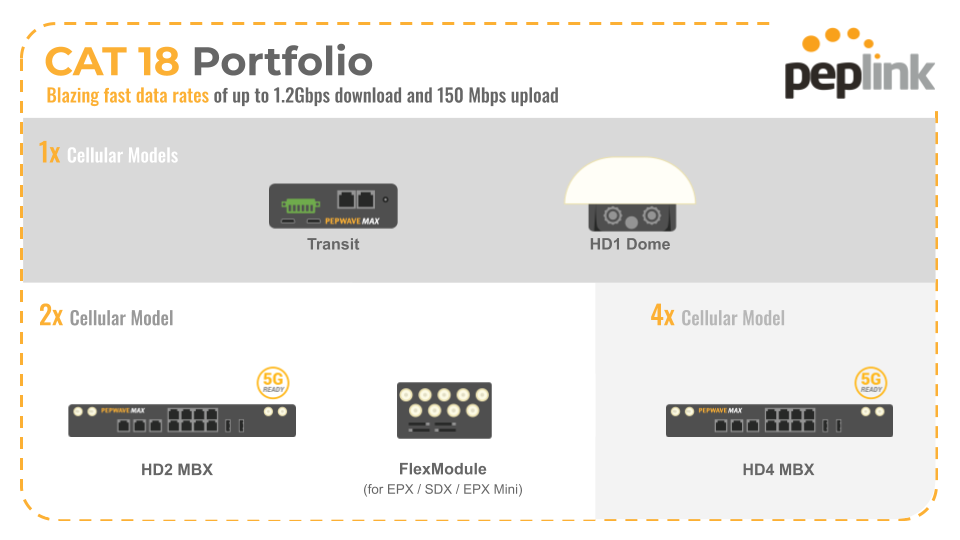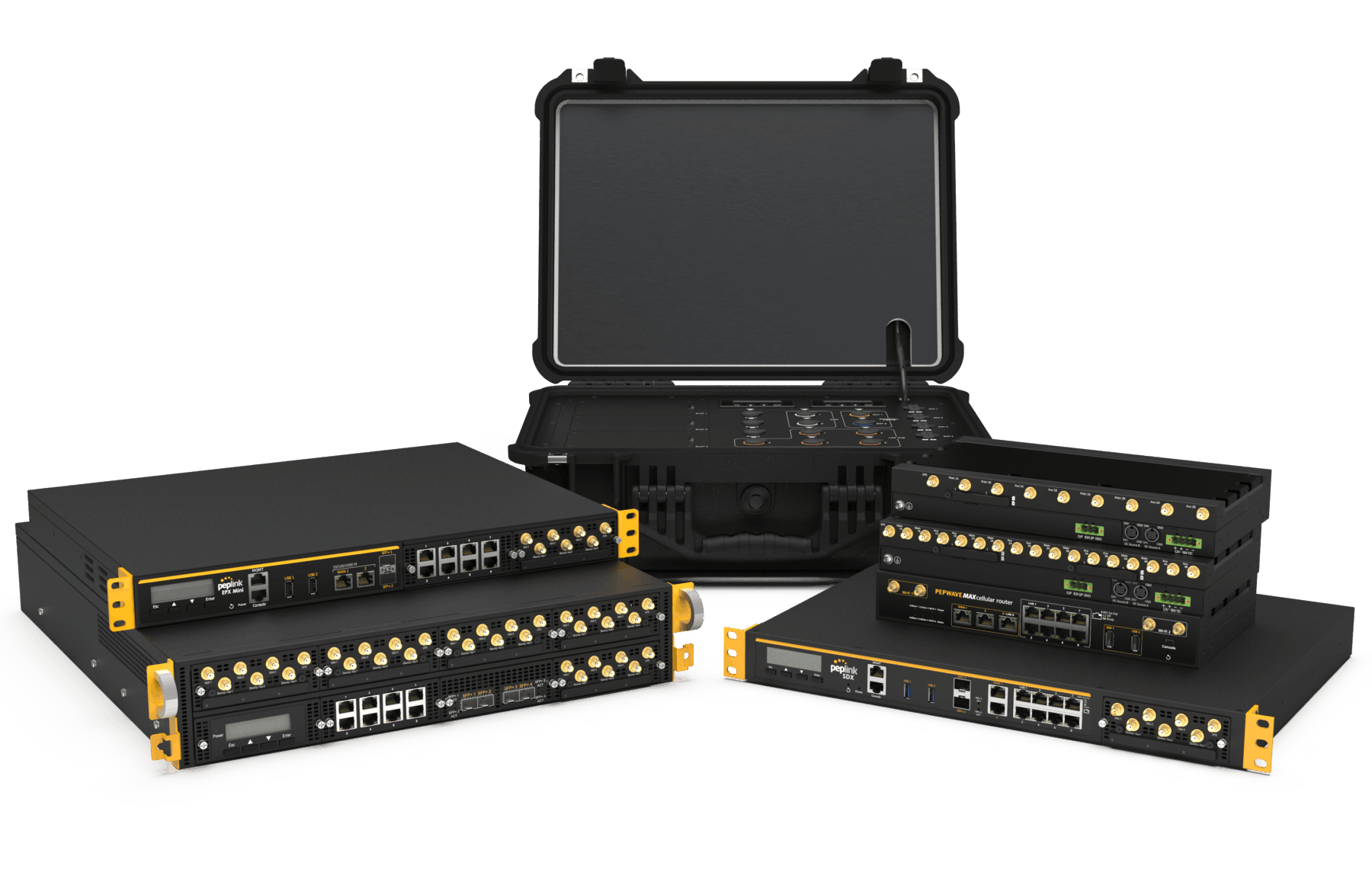Peplink Cellular device for KSA (LTEA)
In order to comply with all required bands (B1, B3, B8, B20, B28, B40 and B41), Peplink has 7 models supporting these bands as for now:
MAX Transit, HD1 Dome, Balance 20X with Expansion Module Asia Pacific/CAT-6, Balance 310X, HD2 MBX, HD4 MBX and SDX/EPX Cat-18 FlexModule.



